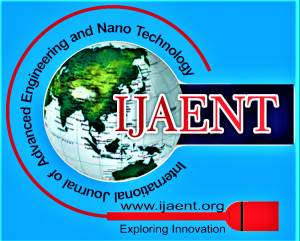![]()
Morphology, Mechanical Properties and Surface Characteristics of Electrospun Polyacrylonitrile (PAN) Nanofiber Mats
Zafarulla Khan1, Feras Kafiah2, Hafiz Zahid Shafi3, Fayez Nufaiei4, Sarfaraz Ahmed Furquan5, Asif Matin6
1Prof. Zafarulla Khan, Department of Mechanical Engineering, King Fahd University of Petroleum and Minerals (KFUPM), Dhahran 31261, Saudi Arabia.
2Mr. Feras Kafiah, Department of Mechanical Engineering, King Fahd University of Petroleum and Minerals (KFUPM), Dhahran 31261, Saudi Arabia.
3Mr. Hafiz Zahid Shafi, Department of Mechanical Engineering, King Fahd University of Petroleum and Minerals (KFUPM), Dhahran 31261, Saudi Arabia.
4Mr. Fayez Nufaiei, Department of Mechanical Engineering, King Fahd University of Petroleum and Minerals (KFUPM), Dhahran 31261, Saudi Arabia.
5Mr. Sarfaraz Ahmed Furquan, Department of Mechanical Engineering, King Fahd University of Petroleum and Minerals (KFUPM), Dhahran 31261, Saudi Arabia.
6Dr. Asif Matin, Center for Engineering Research, Research Institute, King Fahd University of Petroleum and Minerals (KFUPM), Dhahran 31261, Saudi Arabia.
Manuscript received on February 11, 2015. | Revised Manuscript Received on February 12, 2015. | Manuscript published on January 18, 2015. | PP: 15-22 | Volume-2 Issue-3, February 2015.
Open Access | Ethics and Policies | Cite
© The Authors. Published By: Blue Eyes Intelligence Engineering and Sciences Publication (BEIESP). This is an open access article under the CC BY-NC-ND license (http://creativecommons.org/licenses/by-nc-nd/4.0/)
Abstract: This paper explores the effect of solution and electrospinning parameters on the morphology, mechanical properties and surface characteristics of Polyacrylonitrile (PAN) electrospun nanofiber mats. PAN/DMF (Dimethylformamide) solutions with different concentrations were electrospun under various parameters. The results show that the average fiber diameter increase from 208 nm to 881 nm with an increase in PAN concentration from 6 wt% to 12 wt%. Feed rate has inconsistent trend on the fiber diameter; however with increasing feed rate from 0.8 ml/hr to 1.4 ml/hr, the average fiber diameter more than doubledfrom400nm to 895nm. Average fiber diameter decreased slightly from 383 nm to 332 nm up to a certain threshold value of voltage, and then increased significantly to 750 nm when voltage was increased beyond this threshold. Somewhat surprisingly, when the distance between needle tip and collector was increased from 100mm to 150 mm, average fiber diameter increased almost four times (200 to 750 nm).Increasing the needle diameter was found to decrease average fiber diameter and has a direct effect on Taylor cone shape and jet length. The increase in PAN concentration from 6 to 12% increased the tensile strength, failure strength and ductility of electrospun nanofiber mats by 346%, 229% and 504%, respectively. PAN concentrations have a significant effect on the wettability of the nanofiber mats as determined by the contact angle measurements. The electrospun mats became increasingly more hydrophobic with increase in PAN concentration.
Keywords: PAN, electrospinning, nanofiber morphology, solution and process variables, mat.
